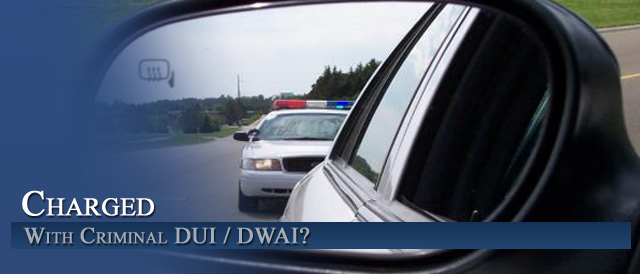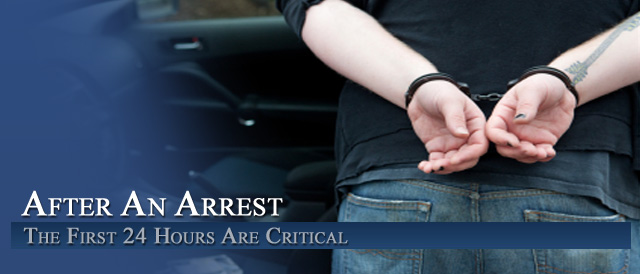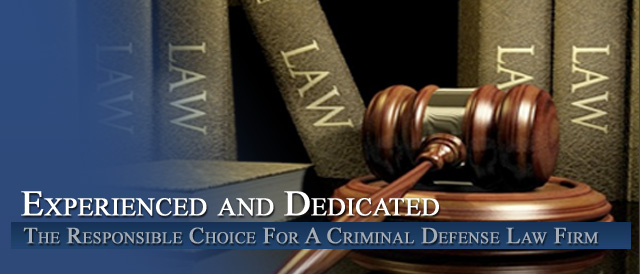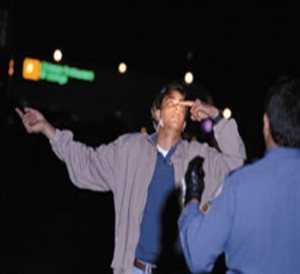




A Comprehensive Look At Understanding Colorado DUID – Drugged Driving – Marijuana Driving Cases – Part Il
By H. Michael Steinberg Colorado DUI – DWAI – DUID Criminal Defense Lawyer – Attorney – EMail [email protected]
A Comprehensive Look At Understanding Colorado DUID – Drugged Driving – Marijuana Driving Cases – Part II – This follow up article explores the practical proof aspects of so called drug or “marijuana” driving in Colorado after the legalization of “recreational marijuana” in January of 2014.
Counterattack – Marijuana and Driving – Using Scientific Evidence To Prove The Accused Is NOT Impaired By Marijuana
There exists a a large body of research which explores the impact of marijuana on psychomotor skills and actual driving performance and which can be used to fight DUID – Driving Under The Influence of Marijuana charges in Colorado.
This NEW research consists of:
- driving simulator studies,
- on-road performance studies,
- crash culpability studies, and
- summary reviews of the existing studies and other evidence.
The Result Of The Latest Marijuana Driving Studies
What evidence will your Colorado Criminal Defense Lawyer use to defend your case?
The available research is consistent: Marijuana has a measurable yet relatively mild effect on psychomotor skills, and does not appear to play a significant role in vehicle crashes.
One Canadien study – found as follows:
“Cannabis leads to a more cautious style of driving, [but] it has a negative impact on decision time and trajectory. [However,] this in itself does not mean that drivers under the influence of cannabis represent a traffic safety risk. … Cannabis alone, particularly in low doses, has little effect on the skills involved in automobile driving.”
Canadian Senate Special Committee on Illegal Drugs. 2002. Cannabis: Summary Report: Our Position for a Canadian Public Policy. Ottawa. Chapter 8: Driving Under the Influence of Cannabis.
Another Study Out of New York found:
“The results to date of crash culpability studies have failed to demonstrate that drivers with cannabinoids in the blood are significantly more likely than drug-free drivers to be culpable in road crashes. … [In] cases in which THC was the only drug present were analyzed, the culpability ratio was found to be not significantly different from the no-drug group.”
G. Chesher and M. Longo. 2002. Cannabis and alcohol in motor vehicle accidents. In: F. Grotenhermen and E. Russo (Eds.) Cannabis and Cannabinoids: Pharmacology, Toxicology, and Therapeutic Potential. New York: Haworth Press. Pp. 313-323.
A Third Study out of the UK had this result:
“This report has summarized available research on cannabis and driving.
… Evidence of impairment from the consumption of cannabis has been reported by studies using laboratory tests, driving simulators and on-road observation. …
Both simulation and road trials generally find that driving behavior shortly after consumption of larger doses of cannabis results in:
(i) a more cautious driving style;
(ii) increased variability in lane position (and headway);
and
(iii) longer decision times.
Whereas these results indicate a ‘change’ from normal conditions, they do not necessarily reflect ‘impairment’ in terms of performance effectiveness since few studies report increased accident risk.
UK Department of Environment, Transport and the Regions (Road Safety Division). 2000. Cannabis and Driving: A Review of the Literature and Commentary. Crowthorne, Berks: TRL Limited.
The Organization “NORMAL” – Has Published Excellent Analysis In The Area of Marijuana driving – here are excerpts from their research and a link to their website http://norml.org/.
The Impact Of “Experienced” Marijuana Users
Studies have also concluded that much of the kind of dangerous impairment is directly correlated to a person’s experience with marijuana, rather than some hard, fast ratio.
“Overall, we conclude that the weight of the evidence indicates that:
1. There is no evidence that consumption of cannabis alone increases the risk of culpability for traffic crash fatalities or injuries for which hospitalization occurs, and may reduce those risks.
2. The evidence concerning the combined effect of cannabis and alcohol on the risk of traffic fatalities and injuries, relative to the risk of alcohol alone, is unclear.
3. It is not possible to exclude the possibility that the use of cannabis (with or without alcohol) leads to an increased risk of road traffic crashes causing less serious injuries and vehicle damage.”
M. Bates and T. Blakely. 1999. “Role of cannabis in motor vehicle crashes.” Epidemiologic Reviews 21: 222-232.
“In conclusion, marijuana impairs driving behavior. However, this impairment is mitigated in that subjects under marijuana treatment appear to perceive that they are indeed impaired. Where they can compensate, they do, for example by not overtaking, by slowing down and by focusing their attention when they know a response will be required. … Effects on driving behavior are present up to an hour after smoking but do not continue for extended periods.
With respect to comparisons between alcohol and marijuana effects, these substances tend to differ in their effects. In contrast to the compensatory behavior exhibited by subjects under marijuana treatment, subjects who have received alcohol tend to drive in a more risky manner. Both substances impair performance; however, the more cautious behavior of subjects who have received marijuana decreases the impact of the drug on performance, whereas the opposite holds true for alcohol.”
A. Smiley. 1999. Marijuana: On-Road and Driving-Simulator Studies. In: H. Kalant et al. (Eds) The Health Effects of Cannabis. Toronto: Center for Addiction and Mental Health. Pp. 173-191.
“Intoxication with cannabis leads to a slight impairment of psychomotor … function. … [However,] the impairment in driving skills does not appear to be severe, even immediately after taking cannabis, when subjects are tested in a driving simulator. This may be because people intoxicated by cannabis appear to compensate for their impairment by taking fewer risks and driving more slowly, whereas alcohol tends to encourage people to take great risks and drive more aggressively.”
There was a clear relationship between alcohol and culpability. … In contrast, there was no significant increase in culpability for cannabinoids alone. While a relatively large number of injured drivers tested positive for cannabinoids, culpability rates were no higher than those for the drug free group. This is consistent with other findings.”
On-Road Marijuana Driving Performance Studies
“Marijuana’s effects on actual driving performance were assessed in a series of three studies wherein dose-effect relationships were measured in actual driving situations that progressively approached reality.
… THC’s effects on road-tracking after doses up to 300 �g/kg never exceeded alcohol’s at bacs of 0.08%; and, were in no way unusual compared to many medicinal drugs. Yet, THC’s effects differ qualitatively from many other drugs, especially alcohol.
Evidence from the present and previous studies strongly suggests that alcohol encourages risky driving whereas THC encourages greater caution, at least in experiments. Another way THC seems to differ qualitatively from many other drugs is that the formers users seem better able to compensate for its adverse effects while driving under the influence.”
H. Robbe. 1995. Marijuana’s effects on actual driving performance. In: C. Kloeden and A. McLean (Eds) Alcohol, Drugs and Traffic Safety T-95. Adelaide: Australia: HHMRC Road Research Unit, University of Adelaide. Pp. 11-20.
“This report concerns the effects of marijuana smoking on actual driving performance. … This program of research has shown that marijuana, when taken alone, produces a moderate degree of driving impairment which is related to consumed THC dose. The impairment manifests itself mainly in the ability to maintain a lateral position on the road, but its magnitude is not exceptional in comparison with changes produced by many medicinal drugs and alcohol. Drivers under the influence of marijuana retain insight in their performance and will compensate when they can, for example, by slowing down or increasing effort. As a consequence, THC’s adverse effects on driving performance appear relatively small.”
W. Hindrik and J. Robbe and J. O’Hanlon. 1993. Marijuana and actual driving performance. Washington, DC: US Department of Transportation National Highway Traffic Safety Administration, Report No. DOT HS 808 078.
Summary of Road Trials of Cannabis and Driving
Driving Simulator Studies
“Overall, it is possible to conclude that cannabis has a measurable effect on psychomotor performance, particularly tracking ability. Its effect on higher cognitive functions, for example divided attention tasks associated with driving, appear not to be as critical. Drivers under the influence of cannabis seem aware that they are impaired, and attempt to compensate for this impairment by reducing the difficulty of the driving task, for example by driving more slowly.
In terms of road safety, it cannot be concluded that driving under the influence of cannabis is not a hazard, as the effects of various aspects of driver performance are unpredictable. However, in comparison with alcohol, the severe effects of alcohol on the higher cognitive processes of driving are likely to make this more of a hazard, particularly at higher blood alcohol levels.”
B. Sexton et al. 2000. The influence of cannabis on driving: A report prepared for the UK Department of the Environment, Transport and the Regions (Road Safety Division). Crowthorne, Berks: TRL Limited.
Acute Cannabis Intoxication May Be Associated With Changes In Psychomotor Performance
• Changes in performance are typically dose-related
• Changes in performance are most acute in naïve users
• Changes in performance are typically short-lived
– 70 percent of subjects manifest ‘significant’ psychomotor impairment 20- 40 minutes following cannabis inhalation; this percentage falls to 30 percent after 60 minutes (Berghaus et al., 1998 as cited by Gieringer).
– Peak acute effects following cannabis inhalation are typically obtained within 10 to 30 minutes (NHTSA. 2004. Drugs and Human Performance Facts Sheets)
– “Experimental research on the effects of cannabis … indicat[e] that any effects … dissipate quickly after one hour.” (NHTSA. 2003. State of Knowledge of Drug-Impaired Driving: FINAL REPORT)
– “[T]he cannabis effect (on driving performance) tends to disappear after the first 60 minutes of use.” (Pulido et al., 2011. Cannabis use and traffic injuries.)
• Cannabis-influenced changes in performance are typically subtle (particularly when compared to those associated w/ alcohol)
– “THC’s adverse effects on driving performance appear relatively small.” (Robbe. 1993.
Marijuana and actual driving performance: Final report for DOT)
– “[M]ost marijuana-intoxicated drivers show only modest impairments on actual road tests. … Although cognitive studies suggest that cannabis use may lead to unsafe driving, experimental studies have suggested that it can have the opposite effect.” (Sewell et al., 2009. The effect of cannabis compared with alcohol on driving)
– “Performance as rated on the Driving Proficiency Scale did not differ between treatments (cannabis versus placebo). It was concluded that the effects of low doses of THC … on higher-level driving skills as measured in the present study are minimal.” (Lamers et al., 2001. Visual search and urban driving under the influence of marijuana and alcohol.)
• Experienced users tend to become tolerant to many of cannabis’ performance-impairing effects
– “[F]requent marijuana users may show fewer behavioral signs of disruption during intoxication than infrequent users, even when difficult memory tasks are used to assess cognitive performance.” (Hart et al., 2010. Neurophysiological and cognitive effects of marijuana in frequent users )
– “The present study confirms that heavy cannabis users develop tolerance to some of the impairing behavioral effects of cannabis.” (Theunissen et al., 2011. Neurophysiological functioning of occasional and heavy cannabis users during THC intoxication)
– “[T]he present study generally confirms that heavy cannabis users develop tolerance to the impairing effects of THC on neurocognitive task performance (Ramaekers et al., 2010. Tolerance and cross-tolerance to neurocognitive effects of THC and alcohol in heavy cannabis users)
– “Experienced smokers who drive on a set course show almost no functional impairment under the influence of marijuana.” (Sewell et al., op. cit.)
Acute Cannabis Intoxication Is Associated With Changes In Psychomotor Performance
• Combining alcohol with cannabis may increase psychomotor impairment in a synergistic manner
– “This study demonstrates that cannabis impairs driving ability in a concentration-related manner. The effect is smaller than for ethanol. The effect of ethanol and cannabis taken simultaneously is additive.” (Bramness et al., 2010. Impairment due to cannabis and ethanol: clinical signs and additive effects)
– “Experimental studies have shown alcohol and THC combined can produce severe performance impairment even when given at low doses. The combined effect of alcohol and cannabis on performance and crash risk appeared additive in nature, i.e. the effects of alcohol and cannabis combined were always comparable to the sum of the effects of alcohol and THC when given alone.” (Ramaekers et al., 2004. Dose related risk of motor vehicle crashes after cannabis use)
Manifestations of Changes In Psychomotor Performance Following Cannabis Use
• Increase in break latency (Ligouri et al., 1998. Effects of marijuana on equilibrium, psychomotor performance, and simulated driving)
• Increase in variability of lateral position (sdlp/weaving) (Robbe. 1993. op. cit.)
• Decreased performance in critical tracking test (eye-hand coordination) (Ramaekers et al., 2006. Cognition and motor control as a function of Delta9-THC concentration in serum and oral fluid: limits of impairment)
• Increased reaction time (Ronen et al., 2008. Effects of THC on driving performance, physiological state and subjective feelings relative to alcohol)
• Changes in peripheral vision, steadiness of speed, decision making
How Do Cannabis-Induced Changes In Performance Differ From Alcohol?
• Less aggressive driving
– “In contrast to the compensatory behavior exhibited by subjects under marijuana treatment, subjects who have received alcohol tend to drive in a more risky manner.” (Smiley, 1999. Marijuana: On-Road and Driving-Simulator Studies. In: Kalant et al., The Health Effects of Cannabis.)
• Slower speed
– “After THC administration, subjects drove significantly slower than in the control condition, while after alcohol ingestion, subjects drove significantly faster than in the control condition.” (Ronen et al., 2008. op. cit.)
• Increased distance between vehicles.
– “Coefficient of headway variation increased slightly following THC.” (Robbe, 1993. op. cit.)
How Do Cannabis-Induced Changes In Performance
Differ From Alcohol?
• Overestimation of time
– “While alcohol causes an underestimate of time, marijuana causes an overestimate of time” (NHTSA. 2003. op. cit.)
• Subjects are aware of their impairment and try to compensate accordingly
– “[S]ubjects in the marijuana group were not only aware of their intoxicated condition, but were … attempting to compensate for it. These … findings … support … the common belief that drivers become overconfident after drinking alcohol and … that they become more cautious and self-critical after consuming low doses of THC, as smoked marijuana.” (Robbe. 1993. op. cit.)
• Refusal to drive altogether
– “The willingness to drive was influenced by the importance of the requested task. Under significant cannabinoids influence, the participants refused to drive.” (Menetrey et al., 2005. Assessment of driving capability … following oral administration of 20 mg dronabinol or of a cannabis decoction made with 20 or 60 mg Delta9-THC.)
How Do Law Enforcement’s Officer’s Presently Identify DUI Cannabis Drivers?
• Law Enforcement Officers (LEO’s) personal observations at the scene
– erratic driving
– smell of burnt marijuana in the vehicle
– bloodshot eyes
– marijuana in plain view
– driver’s admission of having consumed cannabis
• Suspects’ performance of Filed Spbriety Tests
– “The current results highlight the utility of the … OLS (one leg stand) test to accurately identify the consumption of THC.” ” (Downey et al., 2012. Detecting impairment associated with cannabis with and without alcohol on the Standardized Field Sobriety Tests)
How Do Law Enforcement Officers Detect Suspected DUI Cannabis Drivers?
• Drug Recognition Examination (DRE)
– Lack of convergence
– elevated blood pressure
– perception of time
– pupil size
– conjunctiva of the eye
• Toxicological exams
– Blood test and/or urinalysis
Are Present Methods Effective For Identifying Suspected DUI Cannabis Drivers?
• Washington prosecutors enjoy an estimated 80 percent conviction rate in criminal cases where suspects are charged with DUI and request an administrative hearing
• “The Washington State Patrol has earned distinction as the top DUI enforcement agency on the entire continent. … The International Association of Chiefs of Police announced the honor this week. …
No Consensus RE What THC / Blood Standards Are Predictors of Psychomotor Impairment
– “In terms of attempting to link drug concentrations to behavioral impairment, blood is probably the specimen of choice. However, forensic toxicologists generally have failed to agree on specific plasma concentrations that could be designated as evidence of impairment.” (NHTSA. 2003. op. cit.)
There Is a Wide Variance of THC’s Effects Among Individual Consumers
– “Individual drivers can vary widely in their sensitivity for THC induced impairment as evinced by the weak correlations between THC in serum and magnitude of performance impairment.” (Ramaekers et al., 2009. Dose related risk of motor vehicle crashes after cannabis use: an update.
In: Drugs, Driving, and Traffic Safety. World Health Organization)
– “It should be stressed however that the predictive validity of any per se limit is confined to the driving population at large, and not necessarily applicable to each and every driver as an individual.” (Ramaekers et al., 2009. op. cit.)
– Plasma of drivers showing substantial impairment in these studies contained both high and low THC concentrations; and drivers with high plasma concentrations showed substantial, but also no impairment, and even some improvement.” (Robbe, 1993. op. cit.)
Cannabis Impacts The Psychomotor Performance of Naïve and Experienced Subjects Differently
– “THC did not affect performance of heavy cannabis users in the critical tracking task, the stop-signal task, and the Tower of London. These tasks have previously been shown to be very sensitive to the impairing potential of THC when administered to infrequent cannabis (users).
The lack of THC on these tasks basically confirms the previous notions that heavy cannabis users can develop tolerance to behaviorally impairing effects of THC.” (Ramaekers et al., 2010. op. cit.)
– “No significant differences were observed for critical-tracking or divided attention task performance in this cohort of heavy chronic cannabis consumers.” (Schwope et al. 2012. Psychomotor performance … and whole blood THC concentrations in heavy chronic cannabis smokers following acute smoked cannabis)
– “Experienced smokers who drive on a set course show almost no functional impairment under the influence of marijuana.” (Sewell et al., op. cit.)
Residual Levels of THC May Be Present in The Blood of Chronic Consumers For Several Days
– “On day 7, 6 full days after entering the unit, six participants (out of 25) still displayed detectable THC concentrations. … The highest observed THC concentrations on admission (day 1) and day 7 were 7.0 and 3.0 ng/ml, respectively. … Conclusions: Substantial whole blood
THC concentrations persist multiple days after drug discontinuation in heavy chronic cannabis users. … These findings also may impact on the implementation of per se limits in driving under the influence of drugs legislation.” (Karschner et al., 2009. Do Delta- 9- tetrahydrocannabinol concentrations indicate recent use in chronic cannabis users?)
Residual Levels of THC May Be Present in The Blood of Chronic Consumers For Several Days
– “A threshold of 2-3ng/ml THC as an indicator of recent drug use (i.e, smoking within the previous 6 hours) as recommended by Huestis et al appears to be valid only for occasional users. Heavy users might exhibit measurable cannabinoid concentrations in blood (median: 3.2ng/ml THC in blood serum), even if the last cannabis use was more than 24 hours ago. …
Therefore, cannabinoid concentrations in heavy users’ blood from a later elimination phase might not be distinguished from an acute use of an occasional user.” (Toennes et al., 2008. Comparison of cannabinoid pharmacokinetic properties in occasional and heavy users smoking a marijuana or placebo joint)
– “[D]etection of psychoactive cannabinoids seem possible over a time period of more than 24-48 hours after abstaining from cannabis smoking. …
Impairment could not be assessed … in any subject at the time of blood sampling.” (Skopp et al., 2008. Cannabinoid concentrations in spot serum samples 24-48 hours after discontinuation of cannabis smoking.)
Estimated Limits Are Based on Retrospective, Not Prospective Case-Control Studies
– “Our study is an epidemiological study including a control group of non-accident drivers selected randomly from the moving traffic flow. The key advantage of this study is that the control (non-accident) drivers were legally stopped, tested for drug use and compared with a representative group of seriously injured drivers. … In our study, no association was found between exposure to cannabis and road accidents.” (Movig et al. 2004. Psychoactive substance use and the risk of motor vehicle accidents)
Law Enforcement Officers Can Not Collect a Blood Sample in a Time-Sensitive Manner
– “[I]n DUID cases, the delay between the accident and the final blood draw can be long and back-extrapolation is not an option due to the complex pharmacokinetic profile of THC.” (Wille et al., 2010. Conventional and alternative matrices for driving under the influence of cannabis.)
– “[A]lcohol is excreted to a small extent on the breath and the ratio of breath to blood of alcohol is reasonably constant. … Drugs other than alcohol, particularly cannabis, do not share these convenient pharmacokinetic properties.” (Chesher et al., 2002. Cannabis and alcohol in motor vehicle accidents. In: Cannabis and Cannabinoids:
Understanding Colorado DUID – Drugged Driving – Marijuana Driving Cases – Part Il
ABOUT THE AUTHOR: H. Michael Steinberg – Email The Author – A Denver Colorado DUI – DWAI – DUID (Marijuana Driving)Criminal Defense Lawyer – or call his office at 303-627-7777 during business hours – or call his cell if you cannot wait and need his immediate assistance – 720-220-2277.
If you are charged with A Colorado crime or you have questions about [shoplifting or grand theft], please call our office. The Law Offices of H. Michael Steinberg, in Denver, Colorado, provide criminal defense clients with effective, efficient, intelligent and strong legal advocacy. We can educate you and help you navigate the stressful and complex legal process related to your criminal defense issue.
 H. Michael Steinberg, is a Denver, Colorado criminal defense lawyer with over 40 years of day to day courtroom experience – specializing in Colorado Criminal Law along the Front Range. He will provide you with a free initial case consultation to evaluate your legal issues and to answer your questions with an honest assessment of your options. Remember, it costs NOTHING to discuss your case. Call now for an immediate free phone consultation.
H. Michael Steinberg, is a Denver, Colorado criminal defense lawyer with over 40 years of day to day courtroom experience – specializing in Colorado Criminal Law along the Front Range. He will provide you with a free initial case consultation to evaluate your legal issues and to answer your questions with an honest assessment of your options. Remember, it costs NOTHING to discuss your case. Call now for an immediate free phone consultation.
Helping Clients To Make Informed Decisions In the Defense of Colorado Criminal Cases.
Contact A Lawyer with Three Decades of Experience as a Denver Criminal Attorney at The Steinberg Colorado Criminal Defense Law Firm Today.
Colorado Defense Lawyer H. Michael Steinberg provides solid criminal defense for clients throughout the Front Range of Colorado – including the City and County courts of Adams County, Arapahoe County, City and County of Boulder, City and County of Broomfield, City and County of Denver, Douglas County, El Paso County – Colorado Springs, Gilpin County, Jefferson County, Larimer County, and Weld County,…. and all the other cities and counties of Colorado along the I-25 Corridor… on cases involving Understanding Colorado DUID – Drugged Driving – Marijuana Driving Cases – Part Il.
Other Articles of Interest:
- Colorado “Drugged Driving” – Marijuana DUID Cases
- A Comprehensive Look At Understanding Colorado DUID – Drugged Driving – Marijuana Driving Cases – Part I
- Marijuana Drug Driving In Colorado and the DUID Law
- A Colorado Comprehensive DUI – DWAI Penalties Sentencing Chart
- What Are Colorado’s Open Container Laws – Who Can Be Charged? – Alcohol – Marijuana













